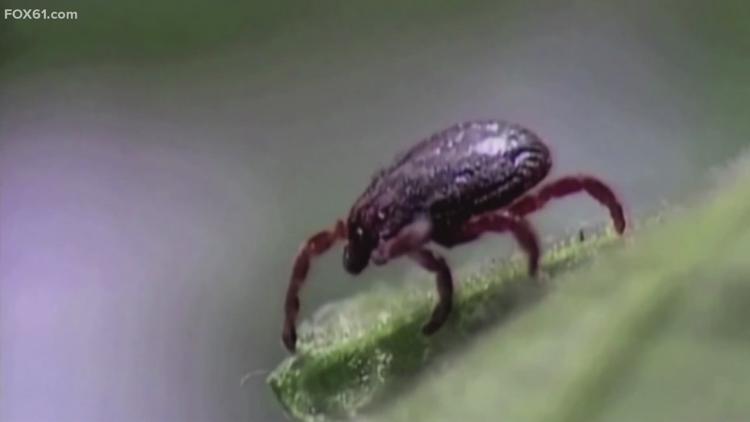HARTFORD, Conn. — They might be small, but they are definitely mighty.
Ticks have become an increasing problem for people and animals in Connecticut, according to experts. With reports of exotic ticks that may pass along tick-borne diseases, it is important to the safety of the community to submit ticks for testing, according to the Connecticut Agricultural Experiment Station (CAES).
For those who find a tick on themselves or on a pet, here's how to send it CAES to test for diseases it may be carrying.
Steps to Submit a Tick:
- Place the tick in a crush-proof container (sealed plastic bags are also accepted).
- Fill out the CAES Tick Submission Form.
- Tightly seal the container or bag and submission form in a padded envelope.
- Request the mail carrier to handle the envelope containing the tick. "Please Hand Sort" can be written on the envelope to achieve this.
- Send to local health departments or The Connecticut Agricultural Experiment Station, located at:
- Tick Testing Laboratory
Jenkins-Waggoner Building
123 Huntington Street
New Haven CT, 06511
- Tick Testing Laboratory
Important Information:
- Do not place the tick on tape.
- Do not package the tick in glass or in other fragile containers.
- Do not package the tick with any objects
- Do not place the tick in any solution.
- Samples may also be dropped off in person at the Tick Testing Laboratory.
- Ticks need to feed for nearly 40 hours to transmit the causative organisms of Lyme disease to humans.
- Ticks that are unengorged are not tested.
The Connecticut Agricultural Experiment Station accepts all ticks for identification but only tests those that have a risk of transmitting Lyme disease, anaplasmosis, and babesiosis to a person, according to CAES.
They do not test the American dog tick or the lone star tick, as they are not carriers for the diseases mentioned above.
To identify a species of tick, the CDC provides a list of the different types of ticks and information on where the ticks are found and what they can possibly transmit on their website.
The Tick Testing Laboratory will send results through e-mail, according to CAES.
Ticks are active all throughout the year since they do not hibernate, but they are most active during the warmer months from April to September, according to the Centers for Disease Control and Prevention.
Test reporting time depends on the number of ticks received throughout the year. During high points of tick activity, processing time may be delayed, said CAES. Ticks are tested on a first-come first-serve basis.
"The number of invasive ticks intercepted in Connecticut has increased substantially in recent years... placing new communities at risk for tick and tick-borne disease exposure," said Dr. Goudarz Molaei, Director of CAES Tick and Tick-bone Diseases Surveillance Program.
According to CAES, to prevent tick bites and reduce the risk of exposure to tick-borne diseases, people should:
- Avoid or limit activity in tick-infested areas including grassy or wooded areas.
- Treat clothing and gear with Environmental Protection Agency (EPA) registered repellents.
- Check your clothing for ticks.
- Check your body and shower after outdoor activity.
- Tumble dry clothes in a dryer on high heat for 10 minutes to kill ticks on clothing after outdoor activity.
Have a story idea or something on your mind you want to share? We want to hear from you! Email us at newstips@fox61.com
---
HERE ARE MORE WAYS TO GET FOX61 NEWS
Download the FOX61 News APP
iTunes: Click here to download
Google Play: Click here to download
Stream Live on ROKU: Add the channel from the ROKU store or by searching FOX61.
Steam Live on FIRE TV: Search ‘FOX61’ and click ‘Get’ to download.



